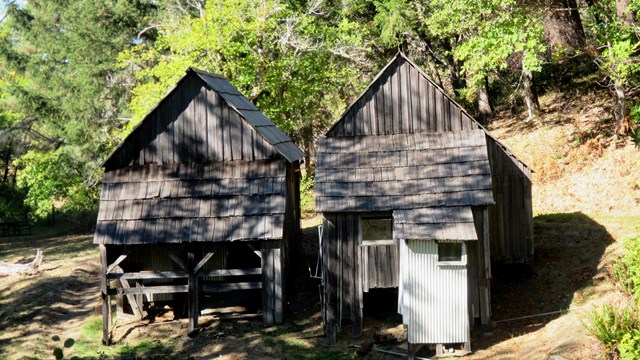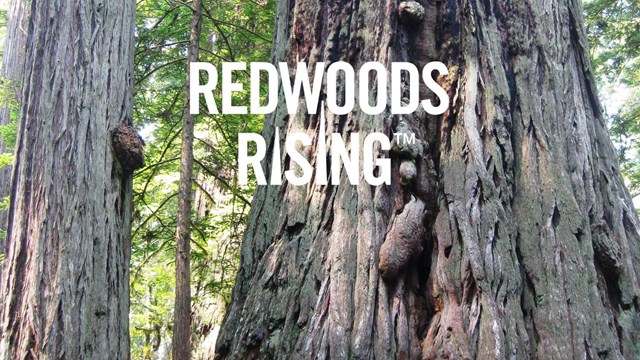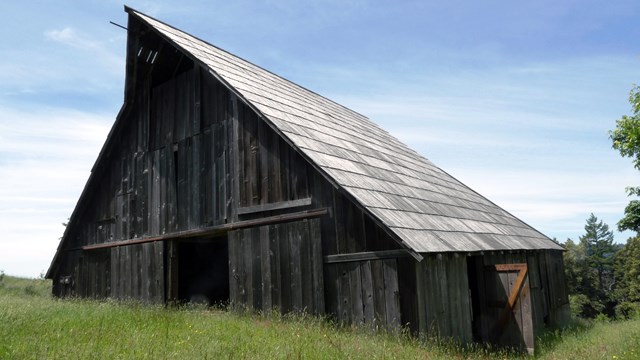
Area History
History, archives, and data. 
Basic information about Redwoods Rising
General information about this exciting landscape-scale restoration program. 
History and Culture
Discover the living record of the past in the parks' cultural landscapes. What Are Cultural Landscapes?Cultural landscapes are more than just physical spaces; they are living narratives that reveal the stories of the past and the ongoing relationship between people and the land. Through careful observation, these landscapes tell us how humans have shaped and been shaped by their surroundings over time. These landscapes evolve, influenced by the ways people have used and managed the land, the political and legal frameworks that governed it, technological advances, and the economic conditions of various periods. While they continue to change, they offer an invaluable window into history, showcasing the layers of human experience embedded within the natural environment. By exploring these landscapes, we uncover a visual and sensory journey—one that invites us to connect with those who came before us. They reveal the choices people made, the challenges they faced, and the legacies they left behind. Through this connection, cultural landscapes become more than historical sites; they become immersive experiences that help us understand our own place within the continuum of time and nature. Redwood's Cultural LandscapesRedwood National and State Parks are home to numerous historic sites that offer a glimpse into the area’s rich cultural, economic, and ecological history. These landmarks connect visitors to the stories of those who shaped the land over thousands of years and reveal the evolving relationships between people and the environment. Prairie Creek Redwoods State Park
Redwood National Park
Jedediah Smith Redwoods State Park
What are Historic Landscapes?Historic landscapes are places that offer a glimpse into the past through the physical features and structures that remain today. These landscapes are shaped by human activity and represent a combination of natural and built environments that have evolved over time. They include everything from roads and trails, agricultural lands, and gardens to military sites, industrial areas, and historic buildings. The significance of historic landscapes lies in their ability to tell stories about how people interacted with, utilized, and modified the land. They reveal patterns of settlement, cultural practices, technological advancements, and economic developments over different periods. By studying these landscapes, we gain insight into the lives of those who came before us and the ways they adapted to and influenced their surroundings. In parks like Redwood National and State Parks, historic landscapes encompass a variety of elements—such as segments of the Old Redwood Highway, early ranching features, and World War II-era radar stations. These landscapes help us understand the region’s cultural evolution and the continued interplay between people and nature over centuries. Redwood's Historic LandscapesRedwood National and State Parks feature a diverse array of historic landscapes that highlight the rich cultural and historical heritage of the region. These landscapes encompass ranching sites, early infrastructure, military installations, and transportation routes that have shaped the development of the area over time. Redwood National Park
Jedediah Smith Redwoods State Park
Del Norte Coast Redwoods State Park
Prairie Creek Redwoods State Park
Collections at the ParkThe collections at Redwood National and State Parks (RNSP) encompass both cultural and natural history materials that reflect the rich heritage and ecological diversity of the parks. These collections include:
These collections are essential for park staff, supporting research, exhibit preparation, and the documentation of administrative management practices. For access to additional collections, the California Department of Parks and Recreation (CDPR) maintains its collection in Sacramento, which is open to the public. For more information, visit their website: CDPR Collections (update link) Cultural Dance PerformancesExperience the rich cultural traditions of the Tolowa and Yurok Tribes through indigenous dance demonstrations held at Redwood National and State Parks and in the surrounding region. One highlight is the annual Tolowa Renewal Dance Demonstration, which takes place at the Jedediah Smith Campground along Highway 199, just west of Hiouchi. This event typically occurs in mid-July and offers visitors an opportunity to witness and connect with the cultural heritage and living traditions of the region’s Native American communities. Civilian Conservation CorpsIn the 1930s, Prairie Creek Redwoods State Park was home to Civilian Conservation Corps (CCC) Company 1903, which consisted of 186 to 193 young men who lived in a temporary camp at Boyes Prairie (now known as Elk Prairie). The CCC's work at the park exemplified the era’s commitment to conservation and sustainable development. The most notable accomplishment of CCC Company 1903 was the construction of the "concession and recreation building", which today serves as the Prairie Creek Redwoods State Park Visitor Center. Built using natural materials salvaged from an earlier cleanup of the prairie, the building’s construction, with the exception of window lights, plumbing, and the chimney flue, showcases the rustic "back to nature" design ethos that characterized National Park Service architecture during the 1920s and 1930s. Designed to blend seamlessly with its environment, the building reflects the CCC’s efforts to restore and preserve the natural prairie landscape, creating a visitor center that harmonizes with the surrounding redwood forest and open prairie. |
Last updated: October 25, 2024
